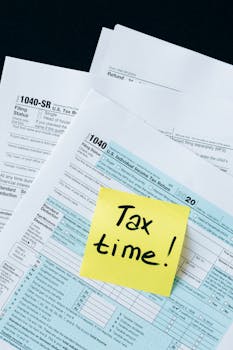What is formative assessment?

What is formative assessment?
Formative assessment plays a vital role in the educational landscape. It’s not just about testing students’ knowledge at the end of a unit but about enhancing the learning process itself. By integrating continuous feedback mechanisms, educators can create a more effective learning environment. So, what exactly is formative assessment, and why is it so crucial?
Understanding Formative Assessment
At its core, formative assessment is the process of evaluating student understanding and progress during the learning process. This ongoing feedback allows both teachers and students to identify areas of improvement before a final judgment is made.
Definition of Formative Assessment
Formative assessment refers to a variety of methods teachers use to conduct in-process evaluations of student comprehension, learning needs, and academic progress during a lesson, unit, or course. Unlike traditional tests, formative assessments are not high-stakes; they are designed to gather actionable feedback to enhance learning experiences. For a deeper understanding, you can explore the detailed definitions provided by EdGlossary.
Difference Between Formative and Summative Assessment
It’s essential to distinguish formative assessment from summative assessment. While formative assessments are ongoing and aim to monitor and improve student learning, summative assessments evaluate student learning at the end of an instructional unit by comparing it against some standard or benchmark. Essentially, formative assessments focus on the journey of learning, while summative assessments focus on the destination.
Summative assessments give a snapshot of what students have learned at a specific time, while formative assessments provide insight into how students are learning throughout the course. For more on this distinction, check out Eberly Center’s comparison.
The Purpose of Formative Assessment
The primary goal of formative assessment is to enhance student learning. It serves several functions that contribute to the educational process.
Enhancing Student Learning
One of the most significant benefits of formative assessment is its ability to identify student strengths and weaknesses. By using various methods—such as quizzes, discussions, or quick feedback loops—teachers can pinpoint which areas students struggle with and adjust their teaching strategies accordingly. This targeted approach not only fosters a deeper understanding but also empowers students to take ownership of their learning.
Improving Instructional Strategies
Teachers can use formative assessment results to refine their instructional methods. When educators see where students excel or struggle, they can alter their teaching styles, materials, or pacing to better meet the needs of their students. This adaptability ensures that learning is not a one-size-fits-all approach but a tailored experience for every student. For insights into the role of formative assessments, refer to NWEA’s blog.
Promoting Active Engagement
Formative assessments foster a culture of active engagement. They encourage students to participate more fully in their learning journey. By receiving regular feedback, students can reflect on their performance, set goals, and strive for improvement. This reflective practice not only boosts confidence but also enhances motivation to learn.
Strategies for Implementing Formative Assessment
To effectively apply formative assessment, educators can utilize various strategies and tools that facilitate continuous feedback.
Classroom Techniques
Incorporating classroom techniques such as quizzes, polls, and group discussions can significantly enhance formative assessment practices. For example, using exit tickets at the end of a class can provide immediate insights into student understanding. Such quick assessments allow teachers to gauge comprehension levels and adjust future lessons accordingly.
Digital Tools and Resources
In our digital age, numerous online tools can streamline the formative assessment process. Platforms like Google Forms allow teachers to create quick surveys or quizzes that provide instant feedback. Additionally, educational apps designed for assessment can enrich the learning experience and make data collection easier. For a comprehensive list of formative assessment strategies, you can view the resource from Oklahoma.gov.
Challenges and Considerations
While formative assessment offers many benefits, it’s not without challenges. Educators may face several hurdles when trying to incorporate these methods into their teaching.
Time Constraints
One common challenge is the time required to effectively implement formative assessments. Teachers often juggle numerous responsibilities, making it difficult to find time for ongoing assessment practices. However, by integrating quick assessment techniques into daily class routines, teachers can collect data without feeling overwhelmed.
Ensuring Student Buy-in
Another hurdle is ensuring students recognize the value of formative assessment. Educators can encourage student engagement by clearly communicating the benefits of these assessments—like improving their understanding and performance. Fostering a classroom environment where feedback is viewed as a tool for growth can enhance student participation.
Conclusion
In summary, formative assessment is a powerful strategy that enhances learning outcomes and promotes effective teaching. By providing ongoing feedback, it enables educators to adapt their methods and helps students take charge of their learning journey. Emphasizing formative assessments ensures that education is not just about grades but about growth and understanding.
By focusing on formative assessment, educators can create a more engaging, responsive learning environment that ultimately leads to greater success for all students. Let’s embrace this dynamic approach to make learning a more enriching experience.